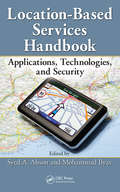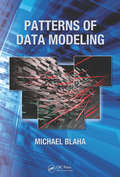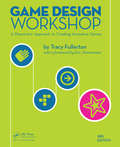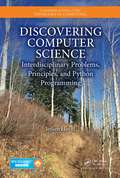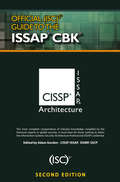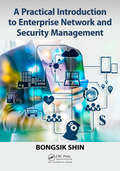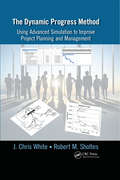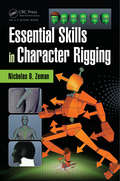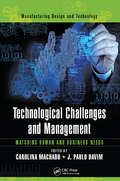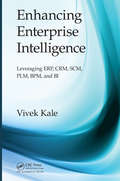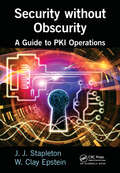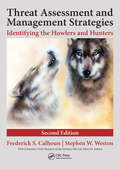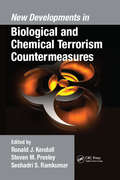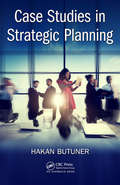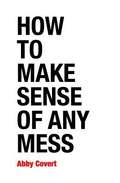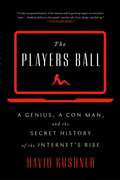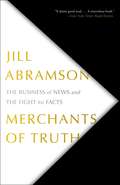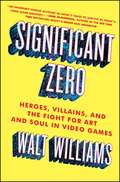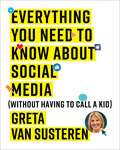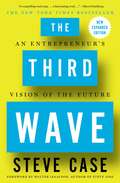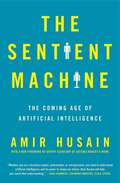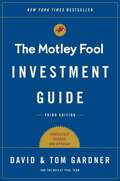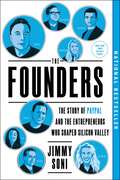- Table View
- List View
Location-Based Services Handbook: Applications, Technologies, and Security
by Mohammad Ilyas Syed A. AhsonLocation-Based Services Handbook: Applications, Technologies, and Security is a comprehensive reference containing all aspects of essential technical information on location-based services (LBS) technology. With broad coverage ranging from basic concepts to research-grade material, it presents a much-needed overview of technologies for positioning and localizing, including range- and proximity-based localization methods, and environment-based location estimation methods. Featuring valuable contributions from field experts around the world, this book addresses existing and future directions of LBS technology, exploring how it can be used to optimize resource allocation and improve cooperation in wireless networks. It is a self-contained, comprehensive resource that presents: A detailed description of the wireless location positioning technology used in LBS Coverage of the privacy and protection procedure for cellular networks—and its shortcomings An assessment of threats presented when location information is divulged to unauthorized parties Important IP Multimedia Subsystem and IMS-based presence service proposals The demand for navigation services is predicted to rise by a combined annual growth rate of more than 104 percent between 2008 and 2012, and many of these applications require efficient and highly scalable system architecture and system services to support dissemination of location-dependent resources and information to a large and growing number of mobile users. This book offers tools to aid in determining the optimal distance measurement system for a given situation by assessing factors including complexity, accuracy, and environment. It provides an extensive survey of existing literature and proposes a novel, widely applicable, and highly scalable architecture solution. Organized into three major sections—applications, technologies, and security—this material fully covers various location-based applications and the impact they will have on the future.
Patterns of Data Modeling
by Michael BlahaBest-selling author and database expert with more than 25 years of experience modeling application and enterprise data, Dr. Michael Blaha provides tried and tested data model patterns, to help readers avoid common modeling mistakes and unnecessary frustration on their way to building effective data models. Unlike the typical methodology book, Patterns of Data Modeling provides advanced techniques for those who have mastered the basics. Recognizing that database representation sets the path for software, determines its flexibility, affects its quality, and influences whether it succeeds or fails, the text focuses on databases rather than programming. It is one of the first books to apply the popular patterns perspective to database systems and data models. It offers practical advice on the core aspects of applications and provides authoritative coverage of mathematical templates, antipatterns, archetypes, identity, canonical models, and relational database design.
PMP Exam Challenge!: 600 Mind-bending, Thought-provoking Questions For Pmp Exam Preparation (Esi International Project Management Ser. #15)
by Ginger Levin J. LeRoy WardPreparing for and passing the PMP(R) exam is no small feat. Although the number of certified PMP(R)s continues at a phenomenal rate, the exam failure rate remains uncommonly high. PMP(R) Exam Challenge! is designed to help you pass the exam by giving you an easy-to-use, highly portable publication, containing key relevant topics you are certain to
Game Design Workshop: A Playcentric Approach to Creating Innovative Games, Third Edition
by Tracy FullertonCreate the Digital Games You Love to PlayDiscover an exercise-driven, non-technical approach to game design without the need for programming or artistic expertise using Game Design Workshop, Third Edition.Author Tracy Fullerton demystifies the creative process with a clear and accessible analysis of the formal and dramatic systems of game design. E
Discovering Computer Science: Interdisciplinary Problems, Principles, and Python Programming (Chapman & Hall/CRC Textbooks in Computing #15)
by Jessen HavillDiscovering Computer Science: Interdisciplinary Problems, Principles, and Python Programming introduces computational problem solving as a vehicle of discovery in a wide variety of disciplines. <P><P>With a principles-oriented introduction to computational thinking, the text provides a broader and deeper introduction to computer science than typical introductory programming books.Organized around interdisciplinary problem domains, rather than programming language features, each chapter guides students through increasingly sophisticated algorithmic and programming techniques. The author uses a spiral approach to introduce Python language features in increasingly complex contexts as the book progresses.<P><P>The text places programming in the context of fundamental computer science principles, such as abstraction, efficiency, and algorithmic techniques, and offers overviews of fundamental topics that are traditionally put off until later courses. <P><P>The book includes thirty well-developed independent projects that encourage students to explore questions across disciplinary boundaries. Each is motivated by a problem that students can investigate by developing algorithms and implementing them as Python programs.The book's accompanying website — http://discoverCS.denison.edu — includes sample code and data files, pointers for further exploration, errata, and links to Python language references. <P><P>Containing over 600 homework exercises and over 300 integrated reflection questions, this textbook is appropriate for a first computer science course for computer science majors, an introductory scientific computing course or, at a slower pace, any introductory computer science course.
Official ((ISC)2 Press)
by Isc ² CorporateCandidates for the CISSP-ISSAP professional certification need to not only demonstrate a thorough understanding of the six domains of the ISSAP CBK, but also need to have the ability to apply this in-depth knowledge to develop a detailed security architecture.Supplying an authoritative review of the key concepts and requirements of the ISSAP CBK, the Official (ISC)2® Guide to the ISSAP® CBK®, Second Edition provides the practical understanding required to implement the latest security protocols to improve productivity, profitability, security, and efficiency. Encompassing all of the knowledge elements needed to create secure architectures, the text covers the six domains: Access Control Systems and Methodology, Communications and Network Security, Cryptology, Security Architecture Analysis, BCP/DRP, and Physical Security Considerations.Newly Enhanced Design – This Guide Has It All! Only guide endorsed by (ISC)2 Most up-to-date CISSP-ISSAP CBK Evolving terminology and changing requirements for security professionals Practical examples that illustrate how to apply concepts in real-life situations Chapter outlines and objectives Review questions and answers References to free study resources Read It. Study It. Refer to It Often.Build your knowledge and improve your chance of achieving certification the first time around. Endorsed by (ISC)2 and compiled and reviewed by CISSP-ISSAPs and (ISC)2 members, this book provides unrivaled preparation for the certification exam and is a reference that will serve you well into your career. Earning your ISSAP is a deserving achievement that gives you a competitive advantage and makes you a member of an elite network of professionals worldwide.
A Practical Introduction to Enterprise Network and Security Management
by Bongsik ShinComputer networking and cybersecurity are challenging subjects, partly because of the constant rise and fall of related technologies and IT paradigms. As the title implies, much focus of this book is on providing the audience with practical, as well as, theoretical knowledge necessary to build a solid ground for a successful professional career. A Practical Introduction to Enterprise Network and Security Management contains 12 chapters of the correct amount of coverage for a semester or quarter. It balances introductory and fairly advanced subjects on computer networking and cybersecurity to deliver effectively technical and managerial knowledge. It explains sometimes challenging concepts in a manner that students can follow with careful reading. A Practical Introduction to Enterprise Network and Security Management is designed to offer impactful, hands-on learning experiences without relying on a computer lab. First, each chapter comes with practical exercise questions. In the class setting, they are good as individual or group assignments. Many of them are based on simulated or real cases, and take advantage of actual industry products and systems for a reader to better relate theories to practice. Second, there are a number of information-rich screen shots, figures, and tables in each chapter carefully constructed to solidify concepts and thus enhance visual learning. A Practical Introduction to Enterprise Network and Security Management Is written for students studying management information systems, accounting information systems, or computer science in a semester of 15 to 16 weeks, and exposed to the subject for the first time Takes advantage of many real cases and examples, and actual industry products and services (software, hardware, and configurations) so that students can better relate concepts and theories to practice Explains subjects in a systematic, but very practical manner that students can follow through Provides students with practical understanding of both computer networking and cybersecurity Contains highly practical exercise questions, which can be individual or group assignments within or without the class, included in each chapter to reinforce learning. In addition to the thorough technical details, managerial issues including, enterprise network planning, design, and management from the practitioner’s perspective are embedded throughout the text to assist balanced learning. Bearing in mind of the critical importance of security in today’s enterprise networks, the text discusses the implications of network design and management on enterprise security whenever appropriate. Lastly, to reinforce knowledge in security management further, two chapters introduce the fundamentals of cybersecurity in terms of threat types and defense techniques.
The Dynamic Progress Method: Using Advanced Simulation to Improve Project Planning and Management
by J. Chris White Robert M. SholtesRecent computer-based tools for project planning and management focus on user-friendliness and interconnectivity. However, these programs function on the Critical Path Method, or CPM, which was created in the 1950s. These programs, which involve simplistic models and methods, ignore the fact that the underlying computations on which they function h
State Fragility Around the World: Fractured Justice and Fierce Reprisal
by Laurie A. Gould Matthew PateFailed and fragile states often govern through the criminalization of otherwise inconsequential or tolerated acts. These weak states also frequently use kidnapping, murder, and other violent or oppressive tactics to maintain order and stay in power. State Fragility Around the World: Fractured Justice and Fierce Reprisal analyzes the path to state f
Essential Skills in Character Rigging
by Nicholas B. ZemanCharacter rigging is the method with which you create a system for animating a character. A rig is represented by two primary mechanics: the skeleton, consisting of hierarchical rotations to drive the motions, and a skin, or method of deforming the geometry that makes up the character model. Essential Skills in Character Rigging is a beginner's gui
Technological Challenges and Management: Matching Human and Business Needs (Manufacturing Design And Technology Ser. #2)
by J. Paulo Davim Carolina MachadoToday's organizations find themselves in a race to adopt new technologies in order to keep up with their competition. However, two questions must be answered: Are these organizations ready for new technological advancements, and are these new technologies appropriate for every organization? Technological Challenges and Management: Matching Human an
Enhancing Enterprise Intelligence: Leveraging ERP, CRM, SCM, PLM, BPM, and BI
by Vivek KaleEnhancing Enterprise Intelligence: Leveraging ERP, CRM, SCM, PLM, BPM, and BI takes a fresh look at the benefits of enterprise systems (ES), focusing on the fact that ES collectively contribute to enhancing the intelligence quotient of an enterprise. The book provides an overview of the characteristic domains (i.e., business functions, processes, a
Security without Obscurity: A Guide to PKI Operations
by Jeff Stapleton W. Clay EpsteinMost books on public key infrastructure (PKI) seem to focus on asymmetric cryptography, X.509 certificates, certificate authority (CA) hierarchies, or certificate policy (CP), and certificate practice statements. While algorithms, certificates, and theoretical policy are all excellent discussions, the real-world issues for operating a commercial or
Threat Assessment and Management Strategies: Identifying the Howlers and Hunters, Second Edition
by Stephen W. Weston J.D. Frederick S. CalhounThe field of threat assessment and the research surrounding it have exploded since the first edition of Threat Assessment and Management Strategies: Identifying the Howlers and Hunters. To reflect those changes, this second edition contains more than 100 new pages of material, including several new chapters, charts, and illustrations, as well as up
New Developments in Biological and Chemical Terrorism Countermeasures
by Ronald J. Kendall; Steven M. Presley; Seshadri S. RamkumarA science-based text, New Developments in Biological and Chemical Terrorism Countermeasures presents research that addresses the growing threat of chemical and biological terrorism as well as the need for improvements in the implementation of countermeasures. This new textbook building upon Advances in Biological and Chemical Terrorism Countermeasu
Case Studies in Strategic Planning
by Hakan ButunerCase Studies in Strategic Planning shows you how to do systematic strategic planning in real-life cases, regardless of your level of expertise. The simplified version of this methodology and its analysis tools, based on fundamentals, are easily understood and universally applied to any type of business for developing strategic plans. More important
How to Make Sense of Any Mess
by Abby CovertEverything is getting more complex. It is easy to be overwhelmed by the amount of information we encounter each day. Whether at work, at school, or in our personal endeavors, there's a deepening (and inescapable) need for people to work with and understand information. Information architecture is the way that we arrange the parts of something to make it understandable as a whole. When we make things for others to use, the architecture of information that we choose greatly affects our ability to deliver our intended message to our users. We all face messes made of information and people. I define the word "mess" the same way that most dictionaries do: "A situation where the interactions between people and information are confusing or full of difficulties. " - Who doesn't bump up against messes made of information and people every day?This book provides a seven step process for making sense of any mess. Each chapter contains a set of lessons as well as workbook exercises architected to help you to work through your own mess.
The Players Ball: A Genius, a Con Man, and the Secret History of the Internet's Rise
by David Kushner&“An engrossing microcosm of the internet&’s Wild West years&” (Kirkus Reviews), award-winning journalist David Kushner tells the incredible battle between the founder of Match.com and the con man who swindled him out of the website Sex.com, resulting in an all-out war for control for what still powers the internet today: love and sex.In 1994, visionary entrepreneur Gary Kremen used a $2,500 loan to create the first online dating service, Match.com. Only five percent of Americans were using the internet at the time, and even fewer were looking online for love. He quickly bought the Sex.com domain too, betting the combination of love and sex would help propel the internet into the mainstream. Imagine Kremen&’s surprise when he learned that someone named Stephen Michael Cohen had stolen the rights to Sex.com and was already making millions that Kremen would never see. Thus follows the wild true story of Kremen&’s and Cohen&’s decade-long battle for control. In The Players Ball, author and journalist David Kushner provides a front seat to these must-read Wild West years online, when innovators and outlaws battled for power and money. This cat-and-mouse game between a genius and a con man changed the way people connect forever, and is key to understanding the rise and future of the online world. &“Kushner delivers a fast-paced, raunchy tale of sex, drugs, and dial-up.&” —Publishers Weekly
Merchants of Truth: The Business of News and the Fight for Facts
by Jill AbramsonFormer executive editor of The New York Times and one of our most eminent journalists Jill Abramson provides a &“valuable and insightful&” (The Boston Globe) report on the disruption of the news media over the last decade, as shown via two legacy (The New York Times and The Washington Post) and two upstart (BuzzFeed and VICE) companies as they plow through a revolution that pits old vs. new media.&“A marvelous book&” (The New York Times Book Review), Merchants of Truth is the groundbreaking and gripping story of the precarious state of the news business. The new digital reality nearly kills two venerable newspapers with an aging readership while creating two media behemoths with a ballooning and fickle audience of millennials. &“Abramson provides this deeply reported insider account of an industry fighting for survival. With a keen eye for detail and a willingness to interrogate her own profession, Abramson takes readers into the newsrooms and boardrooms of the legacy newspapers and the digital upstarts that seek to challenge their dominance&” (Vanity Fair). We get to know the defenders of the legacy presses as well as the outsized characters who are creating the new speed-driven media competitors. The players include Jeff Bezos and Marty Baron (The Washington Post), Arthur Sulzberger and Dean Baquet (The New York Times), Jonah Peretti (BuzzFeed), and Shane Smith (VICE) as well as their reporters and anxious readers. Merchants of Truth raises crucial questions that concern the well-being of our society. We are facing a crisis in trust that threatens the free press. &“One of the best takes yet on journalism&’s changing fortunes&” (Publishers Weekly, starred review), Abramson&’s book points us to the future.
Significant Zero: Heroes, Villains, and the Fight for Art and Soul in Video Games
by Walt WilliamsFrom the award-winning videogame writer behind Spec Ops: The Line comes an exclusive behind-the-scenes look at how today’s blockbuster video games are made.When his satirical musings in a college newspaper got him discharged from the Air Force, it became clear to Walt Williams that his destiny in life was to be a writer—he just never thought he’d end up writing video games, let alone working on some of the most successful franchises in the industry—Bioshock, Civilization, Borderlands, and Mafia among others. Williams pulls back the curtain on an astonishingly profitable industry that has put its stamp on pop culture and yet is little known to those outside its walls. In his reflective yet comically-observant voice, Williams walks you through his unlikely and at times inglorious rise within one of the world’s top gaming companies, exposing an industry abundant in brain power and out-sized egos, but struggling to stay innovative. Significant Zero also provides clear-eyed criticism of the industry’s addiction to violence and explains how the role of the narrative designer—the poor soul responsible for harmonizing gameplay with storylines—is crucial for expanding the scope of video games into more immersive and emotional experiences. Significant Zero offers a rare look inside this fascinating, billion-dollar industry and a path forward for its talented men and women—gamers and nongamers alike—that imagines how video games might inspire the best in all of us.
Everything You Need to Know about Social Media: Without Having to Call A Kid
by Greta Van SusterenA simple, step-by-step guide to the major social media platforms—Facebook, Twitter, LinkedIn, Instagram, Snapchat, and more—by former news anchor and media maven Greta Van Susteren.
The Third Wave: An Entrepreneur's Vision of the Future
by Steve Case<P> One of America's most accomplished entrepreneurs--a pioneer who made the Internet part of everyday life and orchestrated the largest merger in the history of business--shares a roadmap for how anyone can succeed in a world of rapidly changing technology. <P>Steve Case's career began when he cofounded America Online (AOL) in 1985. At the time, only three percent of Americans were online. It took a decade for AOL to achieve mainstream success, and there were many near-death experiences and back-to-the-wall pivots. AOL became the top performing company of the 1990s, and at its peak more than half of all consumer Internet traffic in the United States ran through the service. After Case engineered AOL's merger with Time Warner and he became Chairman of the combined business, Case oversaw the biggest media and communications empire in the world. <P>In The Third Wave, which pays homage to the work of the futurist Alvin Toffler (from whom Case has borrowed the title, and whose work inspired him as a young man), Case takes us behind the scenes of some of the most consequential and riveting business decisions of our time while offering illuminating insights from decades of working as an entrepreneur, an investor, a philanthropist, and an advocate for sensible bipartisan policies. We are entering, as Case explains, a new paradigm called the "Third Wave" of the Internet. The first wave saw AOL and other companies lay the foundation for consumers to connect to the Internet. <P>The second wave saw companies like Google and Facebook build on top of the Internet to create search and social networking capabilities, while apps like Snapchat and Instagram leverage the smartphone revolution. Now, Case argues, we're entering the Third Wave: a period in which entrepreneurs will vastly transform major "real world" sectors like health, education, transportation, energy, and food--and in the process change the way we live our daily lives. But success in the Third Wave will require a different skill set, and Case outlines the path forward. <P>The Third Wave is part memoir, part manifesto, and part playbook for the future. With passion and clarity, Case explains the ways in which newly emerging technology companies (a growing number of which, he argues, will not be based in Silicon Valley) will have to rethink their relationships with customers, with competitors, and with governments; and offers advice for how entrepreneurs can make winning business decisions and strategies--and how all of us can make sense of this changing digital age. <P><b>A New York Times Bestseller</b>
The Sentient Machine: The Coming Age of Artificial Intelligence
by Amir Husain&“A must-read for anyone looking to understand how artificial intelligence is poised to transform human society and life.&” —Paul Scharre, Author of Four Battlegrounds: Power in the Age of Artificial Intelligence The future is now. Acclaimed technologist and inventor Amir Husain explains how we can live amidst the coming age of sentient machines and artificial intelligence—and not only survive, but thrive.Artificial &“machine&” intelligence is playing an ever-greater role in our society. We are already using cruise control in our cars, automatic checkout at the drugstore, and are unable to live without our smartphones. The discussion around AI is polarized; people think either machines will solve all problems for everyone, or they will lead us down a dark, dystopian path into total human irrelevance. Regardless of what you believe, the idea that we might bring forth intelligent creation can be intrinsically frightening. But what if our greatest role as humans so far is that of creators? Amir Husain, a brilliant inventor and computer scientist, argues that we are on the cusp of writing our next, and greatest, creation myth. It is the dawn of a new form of intellectual diversity, one that we need to embrace in order to advance the state of the art in many critical fields, including security, resource management, finance, and energy. &“In The Sentient Machine, Husain prepares us for a brighter future; not with hyperbole about right and wrong, but with serious arguments about risk and potential&” (Dr. Greg Hyslop, Chief Technology Officer, The Boeing Company). He addresses broad existential questions surrounding the coming of AI: Why are we valuable? What can we create in this world? How are we intelligent? What constitutes progress for us? And how might we fail to progress? Husain boils down complex computer science and AI concepts into clear, plainspoken language and draws from a wide variety of cultural and historical references to illustrate his points. Ultimately, Husain challenges many of our societal norms and upends assumptions we hold about &“the good life.&”
The Motley Fool Investment Guide: How the Fools Beat Wall Street's Wise Men and How You Can Too
by David Gardner Tom GardnerA completely revised and updated edition of an investing classic to help readers make sense of investing today, full of “solid information and advice for individual investors” (The Washington Post).Today, anyone can be an informed investor, and once you learn to tune out the hype and focus on meaningful factors, you can beat the Street. The Motley Fool Investment Guide, completely revised and updated with clear and witty explanations, deciphers all the current information—from evaluating individual stocks to creating a diverse investment portfolio. David and Tom Gardner have investing ideas for you, no matter how much time or money you have. This new edition of The Motley Fool Investment Guide is designed for today’s investor, sophisticate and novice alike, with the latest information on: —Finding high-growth stocks that will beat the market over the long term —Identifying volatile young companies that traditional valuation measures may miss —Using online sources to locate untapped wellsprings of vital information The Motley Fool rose to fame in the 1990s, based on its early recommendations of stocks such as Amazon.com, PayPal, eBay, and Starbucks. Now this revised edition is tailored to help investors tackle today’s market. “If you’ve been looking for a basic book on investing in the stock market, this is it...The Gardners help empower the amateur investor with tools and strategies to beat the pros” (Chicago Tribune).
The Founders: The Story of Paypal and the Entrepreneurs Who Shaped Silicon Valley
by Jimmy SoniNAMED A BEST BOOK OF 2022 BY THE NEW YORKER National Bestseller * New York Times Editors&’ Choice * Financial Times &“Books to Read in 2022&” A SABEW BEST IN BUSINESS BOOK AWARDS FINALIST &“A gripping account of PayPal&’s origins and a vivid portrait of the geeks and contrarians who made its meteoric rise possible&” (The Wall Street Journal)—including Elon Musk, Amy Rowe Klement, Peter Thiel, Julie Anderson, Max Levchin, Reid Hoffman, and many others whose stories have never been shared.Today, PayPal&’s founders and earliest employees are considered the technology industry&’s most powerful network. Since leaving PayPal, they have formed, funded, and advised the leading companies of our era, including Tesla, Facebook, YouTube, SpaceX, Yelp, Palantir, and LinkedIn, among many others. As a group, they have driven twenty-first-century innovation and entrepreneurship. Their names stir passions; they&’re as controversial as they are admired. Yet for all their influence, the story of where they first started has gone largely untold. Before igniting the commercial space race or jumpstarting social media&’s rise, they were the unknown creators of a scrappy online payments start-up called PayPal. In building what became one of the world&’s foremost companies, they faced bruising competition, internal strife, the emergence of widespread online fraud, and the devastating dot-com bust of the 2000s. Their success was anything but certain. In The Founders: The Story of PayPal and the Entrepreneurs Who Shaped Silicon Valley, award-winning author and biographer Jimmy Soni explores PayPal&’s turbulent early days. With hundreds of interviews and unprecedented access to thousands of pages of internal material, he shows how the seeds of so much of what shapes our world today—fast-scaling digital start-ups, cashless currency concepts, mobile money transfer—were planted two decades ago. He also reveals the stories of countless individuals who were left out of the front-page features and banner headlines but who were central to PayPal&’s success. Described as &“an intensely magnetic chronicle&” (The New York Times) and &“engrossing&” (Business Insider), The Founders is a story of iteration and inventiveness—the products of which have cast a long and powerful shadow over modern life. This narrative illustrates how this rare assemblage of talent came to work together and how their collaboration changed our world forever.
